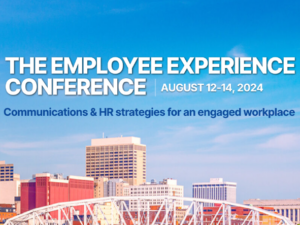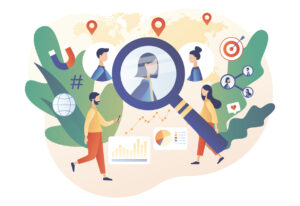3 successful approaches for tying culture comms to business impact
Defining company culture at work is difficult. Arguing its importance to internal stakeholders can be even harder.

Isabel Conrad is the Internal Communications lead at Hot Paper Lantern. Her passion for people frames her worldview and inspires an empathetic and human-centered approach to her work.
A strong company culture is critical to the long-term success of any business and is cited as a major factor for employees in the short term. Data from Indeed shows 46% of job seekers cite company culture as “very important” when choosing to apply to a company; over 47% of employees say that a negative culture motivated them to search for a new employer. These data points indicate that company culture is key to retaining top talent.
As internal communications professionals, you already know that defining company culture in the context of your work environment can be difficult. Arguing the importance of company culture to internal stakeholders can be even harder. To help you convince any stubborn stakeholders, there are three approaches that have the most direct impact on business outcomes.
Learning & career development
Putting employee learning and growth at the center of your culture strategy increases employee engagement, satisfaction, and retention. Employees are more likely to have increased buy-in to the company mission as a direct result of their personal growth. According to LinkedIn’s 2023 Workforce Learning Report, 31% of employees cite “opportunities to learn and develop new skills” as a key factor when considering a new job. Any company looking to invest in learning can implement these two quick wins:
- Establish clear career paths, ladders or lattices for your employees to grow. Obfuscating these processes can discourage people, whereas a clear system enables employees to take agency for their growth. Internal mobility boosts retention and builds workforce skills; at the two-year mark, an employee who has made an internal move has a greater chance of staying with their company (75% vs. 56%).
- Ensure learning opportunities are easily accessible. Strong upskilling programs focused on employee-driven learning ensure employees are engaged and increase the skills they are able to offer your company and customers, providing a direct throughline to your bottom line.
In addition to a strong foundation of learning tools and promotion processes, enabling people leaders to facilitate employee learning can drive results. Giving leaders the tools and agency they need to support employee growth encourages a culture of continued learning and improvement.
Business impact: Upskilled workforce, leadership development
Innovation
Investing in the enablement of innovation is another strategy that will have a direct business impact if done correctly. This strategy really comes down to creating infrastructure where creative ideas can be surfaced and brought to fruition. Taking steps to develop this foundation can be simple:
- Create an avenue for employees to submit new ideas. Something as simple as a digital “submission box” can serve this purpose.
- Have a regular cadence of brainstorming sessions to source new ideas. Your employees know the business better than anyone. If you give them the space to be creative, they are empowered to deliver innovative solutions.
- Ensure you have a system in place to resource novel ideas; such a system should include a process for dedicating employee time and company budget to ideation.
This strategy works well for companies who are looking to grow different areas of their business and invest in new directions. Your employees are in the weeds, and they know how to make the most impact. The key is leveraging those employee ideas to impact innovation and then having the willingness to invest into bigger business initiatives.
Google’s Moonshot Initiative exemplifies this strategy by fostering a culture of audacious thinking and providing the necessary resources to turn groundbreaking employee-driven ideas into reality. This initiative not only fuels Google’s growth in diverse areas but also showcases the transformative power of investing in visionary projects.
Business impact: Employee-driven innovation, new business initiatives
Employee experience
A third proven strategy is matching the employee experience to the brand experience. When employees feel valued–as though they are just as important as the customer–organizations see improvements in customer satisfaction, greater innovation, and generate 25% higher profits than organizations that do not provide a positive employee experience.
Being reminded of what their work means to their customers allows employees to see the company’s vision consistently. Aligning internal experiences for employees and external experiences for customers gives employees a more comprehensive picture of the brand and business. Experiencing the customer perspective firsthand empowers employees to be bought-in brand ambassadors, inspiring them to deliver improved service.
Airbnb has successfully implemented a unique approach to aligning its office spaces with its core mission with the “Worldy Workspaces” initiative. This strategy, which involves recreating the Airbnb experience in their offices, not only reinforces the connection between employees and the brand but also immerses employees in an environment that resonates with Airbnb’s commitment to exceptional guest experiences, further fostering employee engagement and brand advocacy.
These learning and development, innovation, and employee experience strategies each offer unique opportunities to garner employee engagement, and each approach will impact your business. The impacts will vary depending on factors such as company size and communications approach, but if implemented correctly, each can be equally rewarding and yield powerful results.
Business impact: Brand ambassadors and employee buy-in
We’ll dive deeper into how culture communications drive business impact during Ragan’s Employee Experience Conference, Aug. 12-14 at Nashville’s Four Seasons. Register now!






